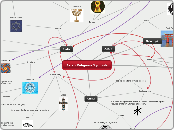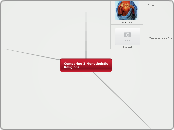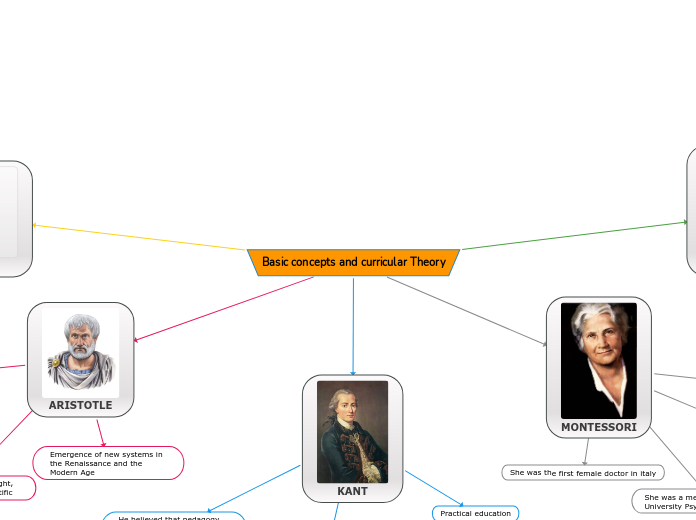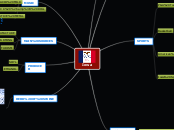Asian Religious Symbols
Main topic
Videos/Websites
What Is...?
Daoism (Taoism)
Subtopic
How We Relate To Religious Symbols Article
http://www.helium.com/items/698503-how-we-relate-to-religious-symbols
Artist ManWoman Attempts to Reclaim Swastika
Vice.com Interviews ManWoman About Tattoos
http://www.vice.com/en_se/read/manwoman-is-taking-back-the-swastika
ManWoman Talks About His 200 Swastka Tattoos,
and His Reasons For Getting Them/Vision He Had
Multiple Meaning of Religious Symbols to Various Cultures
Japan
Shinto
Tomoe
Symbolizes the circular motion of the earth
Three flames said to stand for the earth, the heavens and humankind
To use the Tomoe in a personal spiritual practice, is to invite infinitely accelerated power of the cosmos to be part of your consciousness, providing balanced and abundance support for all endeavors
Torii Gate
Mark the boundary between the sacred world of the shrine and the profane world outside
Found in front of almost every shrine in Japan
China
Buddhism
Lotus (Padma)
The color of the lotus too has an important bearing on the symbol
Represents many aspects of the path, as it grows from the mud (samsara), up through muddy water it appears clean on the surface (purification), and finally produces a beautiful flower (enlightenment)
Refers to the complete purification of body, speech and mind, and the blossoming of wholesome deeds in liberation
Endless Knot/Mandala
Represents the illusory character of time, and long life as it is endless
Having no beginning or end, it also represents the infinite wisdom of the Buddha, and the union of compassion and wisdom
A geometric diagram which symbolises the nature of reality where everything is interrelated and only exists as part of a web of karma and its effect
Eight-Spoked Dharma Wheel
Represents discipline, wisdom, and concentration
Represents basic Buddhist concepts such as the noble eightfold path and the four noble truths
Four noble truths: 1. Life is filled with suffering, 2. Suffering is caused by attachment, 3. Cessation of suffering is possible, and can be attained through detachment, 4. the eightfold path- a method to improve oneself through a moderate path between hedonistic gratification and ascetic self-denial
Christianity
Cross
Represents the resurrection of Christ, and Jesus Christ shedding his blood for forgiveness of the sins of humanity, symbol of sacrifice
Fish
In the first few centuries AD, Christians began using the Greek work for “fish” as an anagram/acronym for “Jesus Christ God’s Son, Saviour”
Ichthys (greek for fish) consists of five letters: I-ch-th-y-s. When used an initials we obtain: Iesous Christos Theou Yios Soter, which literally translates to “Jesus Christ, of God, Son, Saviour
Islam
Use a black, green, or white solid coloured flag with no symbol. Green an important colour used by Muhammad’s tribes, symbolizes nature and life.
Muslims’ reject the crescent moon as a symbol of islam, this symbol is actually an ancient pagan symbol and only became tied to Islam through the Ottoman empire
Islam is against appointed holy symbols
Confucianism
Yin and Yang
Represents the negative and positive principles of universal force
Together constitute the Tao, the eternal principle of heaven and earth, the origin of all things human and divine
Used in Confucianism to explain the universe and how any one thing is either Yin or Yang in relation to some other object or phenomena, and all things can be described only in relation to each other
Chinese ideogram for water is utilized, representing the 'source of life' in Chinese philosophy
Has no standard symbol or icon
Daoism
Ba Gua (Eight Trigrams)
Nine fields are positioned upon the octagon and utilized by a Feng Shui master to epitomize your destiny
Divided into 8 trigrams, each trigram signifies 8 areas of your life, which are individual, yet intertwined; ninth position on the octagon is the center; you, life, vitality (Tai Chi).
Made of of kun, zhen, li, dui, gen, kan, xun, which represent various elements, including numbers, family members, seasons, and feelings
Taijitu
India
Sikhism
Ik Onkar
Symbol of the unity of god, and found on all religious scriptures and places, and also part of the Sikh morning prayer
Made up of the Punjabi character for the number one and the Punjabi letter for “onkar” meaning “god”. Therefore translating to "God Is One"
Khanda
Made up of three images: The Khanda, which is a double edged sword. This represents the belief in one God. The Chakkar, like the Kara it is a circle representing God without beginning or end and reminding Sikhs to remain within the rule of God. Two crossed kirpans representing spiritual authority and political power.
Zoroastrianism
Faravahar
Associated with the fravashi (also known as the frawahr), which is part of the human soul and acts as a protector. It is a divine blessing granted by Ahura Mazda at birth and is entirely good.
Central human figure is generally taken to represent the human soul. One hand points upward, urging believers to always strive for improvement and be mindful of higher powers. The other hand holds a ring, which may represent loyalty and faithfulness
The circle from which the figure emerges can represent the immortality of the soul or the repercussions of our actions, which are brought about by the eternal divine order
Two wings are composed of three main rows of feathers, representing good thoughts, good words and good deeds, which is the basis of Zoroastrian ethics. The tail is likewise comprised of three rows of feathers, and these represent bad thoughts, bad words and bad deeds, above which every Zoroastrian strives to rise
Fire
Priests wear masks over their faces at worship so their breath will not contaminate the sacred fire
Represents creation of Asha and considered a sacred force of light, warmth, and energy for life
Symbol of divine purity, truth, and righteousness
A sacred flame burns eternally in all places of worship, tended by priests. In some homes they also keep an oil lamp burning at all times.
Judaism
Star of David
Many interpretations/Stories of it's meaning
Twelve sides, perhaps representing the Twelve Tribes
Two overlapping triangles, has also been thought to represent the relationship between God and the Jewish people
Doesn’t have any religious significance in Judaism
Believed that the triangles represented humanity’s dual nature – good and evil – and that the star could be used as protection against evil spirits.
Some Kabbalists thought that the six points represented God's absolute rule over the universe in all six directions: north, south, east, west, up and down
Menorah
A special type of Menorah, known as a Chanukkiyah or Hanukiah with nine branches, became associated with the Jewish holiday of Hanukkah. This nine-branched menorah symbolized the miracle of the eight days of light that illuminated the Temple of Jerusalem following the revolt of the Maccabees in 166-65 B.C.E.
Original seven branched menorah symbolized the burning bush as seen by Moses on Mount Sinai, and thus represented the light of God
Jainism
Om represents the salutation to the five revered personalities in the Jain religion. Om is a short form of the Namokar Mahämantra.
Represents the four characteristics of the soul: infinite knowledge (Anant Jnan), infinite perception (Anant Darshan), infinite happiness (Anant Sukh), and infinite energy (Anant Virya)
Three dots represent the Jain path of liberation (Jain trinity): Right Faith (Samyak Darshan), Right Knowledge (Samyak Jnäna), and Right Conduct (Samyak Chäritra), which together lead to liberation
- the crescent of the moon represents the permanent place where the liberated souls reside
Represents the four columns of the Jain Sangh (community): Sadhus, Sadhvis, Shravaks and Shravikas - monks, nuns, female and male laymen
Represents the perpetual nature of the universe in the MADHYALOK (material world), where a creature is destined to one of those states based on their Karmas (deeds)
Four arms of SWASTIKA symbolizes the four GATI (destiny): NARAK (demon), TRIYANCH (animal), MANUSHYA (human) and DEV (angel)
Jain Emblem
The semi-circular on the topmost portion symbolizes SIDDHASHILA, which is a zone beyond the three realms. All of the Siddhas or the liberated bodiless souls reside on this forever, liberated from the cycle of life and death.
The outline of the image represents the universe as described in Jain scriptures. The Jain emblem consists of three LOKS (realms). The upper portion indicates URDHAVA LOK (heaven), the middle portion indicates MADHYALOK (material world) and the lower portion indicates ADHOLOK (hell)
Represents the dedication and trust for the religion and the values and many important concepts to show the path to enlightenment by following the basic principles of AHIMSA (non-violence)
Hinduism
Swastika
Drawn on a Kalash (water pot) at the time of Hindu rituals
Represents luck and prosperity
Can be broken down into Su-Asti-ka, Su means good, Asti means “it really is” and “ka” makes the word a noun. As a result Swastika means “Everything is good.”
Aum/Om
The sound heard at the time of creation of the Universe
Represents Brahman, the Almighty
All major Hindu mantras start with Aum









